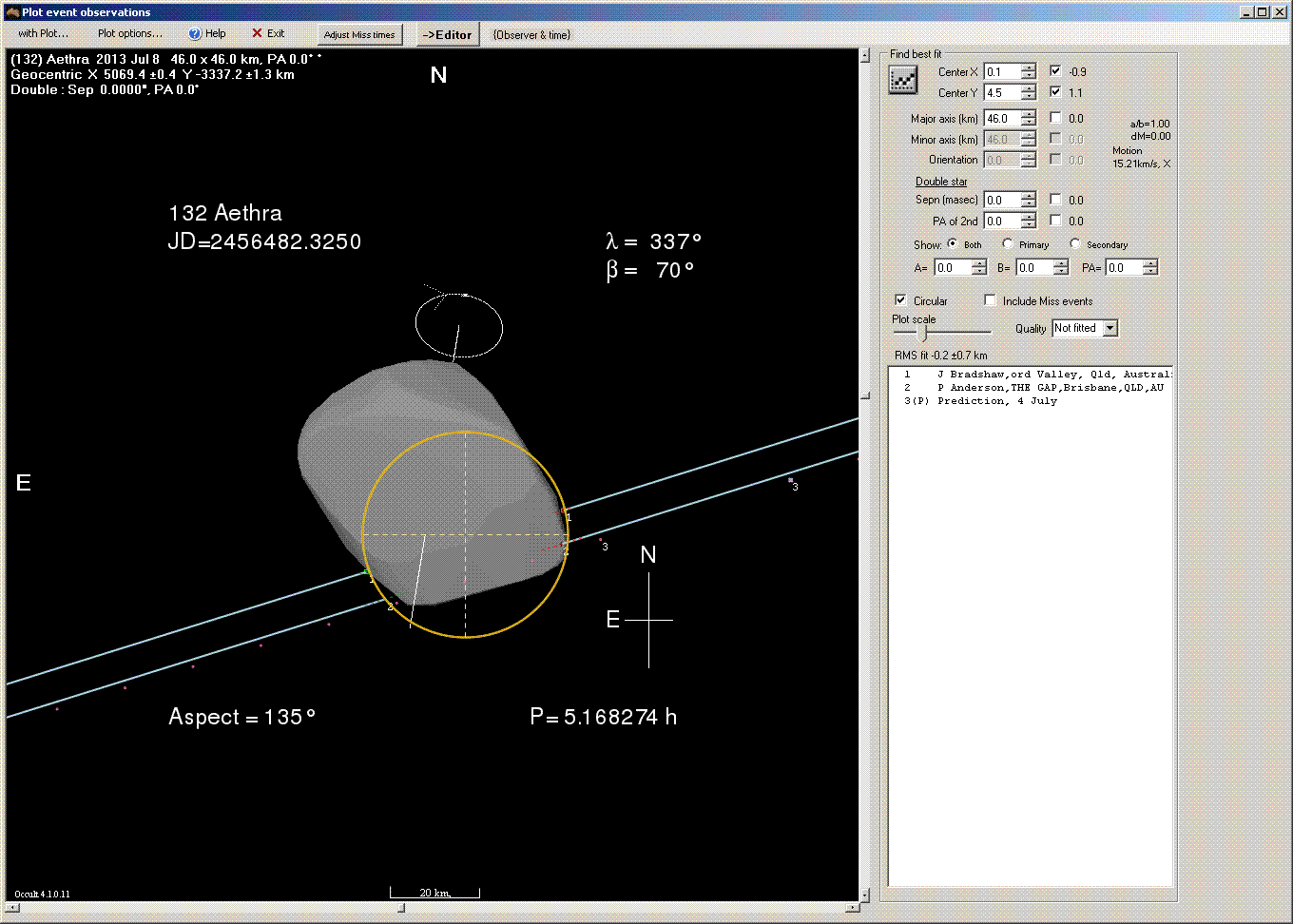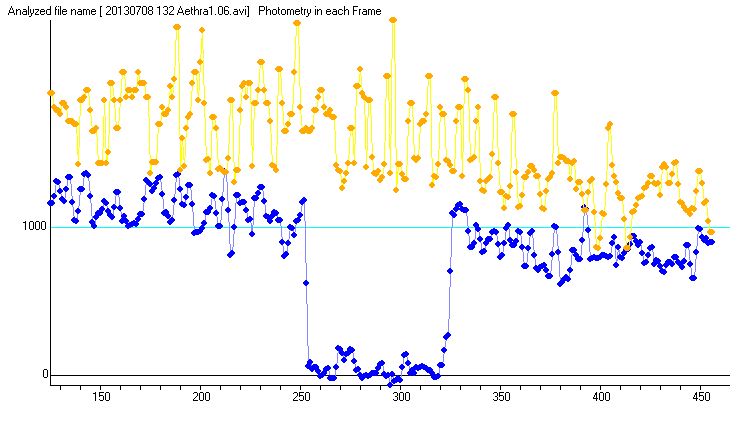|
|
A 2.9 second occultation was recorded by Jonathan Bradshaw using video OSD technique, and a 2.6 second one by Peter Anderson using visual observing technique.
View the updated prediction.
Observers:
1 J Bradshaw,ord Valley, Qld, Australia
2 P Anderson,THE GAP,Brisbane,QLD,AU
3(P) Prediction, 4 July

Discussion:
The circle above is plotted at the expected 46 km diameter of Aethra. With 2 chords and the fact that Jonathan's was longer that the expected 2.8 seconds, and assuming the updated prediction was approximately correct the longer than expected chord of about 44km would suggest that the chord might lie close to the central portion of the asteroid. With 2chords we can be confident of the path of Aethra and that it was north of the predicted line. The ISAM 3D model has been overlaid on the measured ellipse and shows poor fit
The figure below shows Jonathan's Limovie light curve of the occultation.

Observational Data:
Observation details for MP ( 132 ) Aethra
By Star TYC 1094-01128-1
On 2013-07-08 at 19:47:13.0
_______________________________
Observer Jonathan Bradshaw
Location Samford Valley, Qld, Australia
Longitude +152:50
Latitude -27:22
Altitude 80 m
Datum WGS84
Telescope SCT including Cass and Mak
Aperture 36 cm
Seeing Slight flickering Clear
Camera Type G-Star PAL/CCIR
Camera Delay 0
Timing GPS - time inserted Video with frame analysis
Disappearance 19:47:15.85
Reappearance 19:47:18.75
Comments: Nice clear event at 3 frame integration to
mitigate poor seeing http://youtu.be/jItLJWL5WOQ
_______________________________
Observer Peter Anderson
Location THE GAP,Brisbane,QLD,AU
Longitude +152:55
Latitude -27:27
Altitude 170 m
Datum WGS84
Telescope Newtonian
Aperture 41 cm
Seeing Steady Clear
Camera Type Visual
Camera Delay 0
Timing Tape Recorder + time signal Visual, PE applied
Disappearance 19:47:15.90
Reappearance 19:47:18.50
Comments: Observation in twilight but star easily visible.
No wind or distractions. A very satisfactory observation.
Star disappeared at occultation (asteroid never seen)